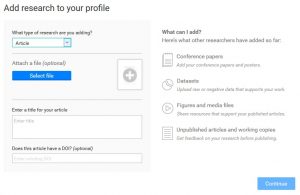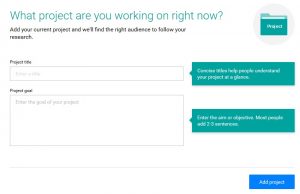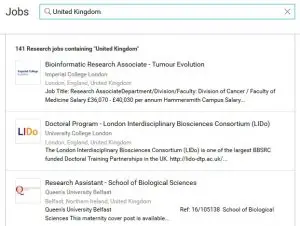ResearchGate is a social networking platform for research scientists. Think of it as a hybrid between Facebook and LinkedIn that is specifically aimed at researchers.
Since its beginning in 2008, the website has over 10 million registered professionals. Using ResearchGate is absolutely free, you only require an institutional e-mail address to get started. Once joined, you can take advantage of ResearchGate’s many attractions.
Here are 5 reasons why you should sign-up to ResearchGate to benefit yourself and your work:
1. Get access to papers
Unfortunately, not all of us are fortunate to have institutional access to every published manuscript. We have all been there. You have found a paper that you are really interested in after scanning the abstract, but you are denied access because either it isn’t open-access or your institution doesn’t have access to that journal. If this is the case, then you may be able to get access to it through ResearchGate. Sometimes authors will upload the full-text of their manuscript to their ResearchGate profile. You can then download this as a PDF.
Alternatively, if it is not yet available on ResearchGate, you have the ability to request that paper. If any of the authors has a ResearchGate account, you can send a request at the click of a button. No more writing formal e-mail requests!
2. Get advice from researchers
If you are struggling with an aspect in the lab, or even dry lab work, the best way to make progress is to ask someone who has been there and done it. This is where ResearchGate stands out. Part of their website has a dedicated questions and answers section where you can post your troubles for experts to comment on. You can also apply topics to your questions, which are basically searchale keywords, so you can target individuals who have expertise in that area. Other researchers who are matched for that expertise will then be prompted to recommend an answer. A very fast and efficient way to cry for help if others in your institute do not know.
I would personally also search the Q&A section beforehand to see if your question has been asked, and answered, previously. You can also choose to ‘Follow’ the question to be notified when future answered are posted in that section.
3. Show off your work
By signing up to ResearchGate, like many other social networking platforms, you have the ability to create a personal profile page for others to get a flavour of your work. On your profile you can display all research-specific details about yourself including published, and unpublished, professional work under the Contributions tab. This work can be further placed into specific categories based on the type of publication, such as articles, conference papers, book chapters, data etc. Try and upload all of your professional work. Obviously the more people that can get access to your work, the more interest it may gather. However, be sure to check for any copyright permissions from journals and publishers before uploading to avoid any infringement issues.
You can also add up to 5 pieces of work to your Featured Research section, which will be displayed on the front of your profile page. Be sure to include your best work here as an added wow factor.
4. Make contacts
If you utilise ResearchGate correctly you can gain useful contacts within your research area, and even start new collaborations.
ResearchGate has a private messaging service where you can send personal messages to researchers you may be interesting in working with. Obviously this is only useful if the author is actually active on ResearchGate.
There is also a handy comments section when viewing papers. Here you can provide your feedback on a paper which can be viewed by the author therefore sparking a conversation. If you appreciate someone’s work, tell them. You may end up with a new follower.
Another useful feature to use is the Projects section. Here, you can tell your followers what projects you are currently working on. Others can then declare their interest in that project by following that project. This will allow them to be updated when future announcements associated with that project are submitted.
ResearchGate is also a great tool to keep in touch. For example, if you meet people at a conference, ask them if they are on ResearchGate. If so, start following them. Alternatively, if someone gathers your attention during a presentation, write their name and institute down and try searching for them later.
Another useful tip is to add a link to your ResearchGate profile in your e-mail signature. This is especially useful to use when sending an introductory e-mail to potential collaborators or employers. They can easily view your professional record by looking at your ResearchGate profile.
5. Find jobs
Since ResearchGate has developed into a reputable social-platform for scientists, it makes sense to have a Jobs section. Here institutes can post their job vacancies which include the job description, contact details of the employer, information on how to apply and sometimes even the salary for the post. Since ResearchGate recommends jobs based on the information linked to your profile page, make sure you keep it up-to-date and complete all of the necessary sections to be prompted about relevant vacancies.
If this is of interest to you, then I would also recommend you sign up to their monthly job newsletter to never miss an opportunity.
Having a ResearchGate profile is a must for the modern day researcher and best of all it is free! So there should be no excuses for not having one. Utilising the features available on the platform will improve you as a research scientist and may even create new opportunities.








